
Timeline:
1936 - The Grosvenor Cinema opened to the public on 12 October.
1937 - The cinema become part of Oscar Deutsch's Odeon cinema chain.
1941 - Renamed Odeon
1950 - Renamed the Gaumont
1964 - Reverted to the Odeon name.
1981 - Given grade-II listed status
1981 - Reopened as an independent cinema and renamed Ace Cinema.
1984 - Granted Grade-II* listed status.
1986 - Closed as Cinema.
1990 - Converted into the Grosvenor Cine/Bar Experience nightclub, and then the Studio Warehouse nightclub.
Mid 1990’s - closed as a nightclub.
2000 - The building was purchased by Zoroastrian Trust Funds, who restored and renovated the cinema as a place of worship.
The Zoroastrian Centre for Europe
![]()
The Zoroastrian Centre, the former Grosvenor Cinema in Rayners Lane, adapted by ZTFE (Zoroastrian Trust Funds of Europe) was selected for a granular-scale exploration of the tangible and intangible heritage of the community and their building. Using the site-integrity methodology the congregation were directly involved in the capture and analysis of their own cultural heritage through a series of co-created film installations.
![]()
![]()
Working in close collaboration with the congregation and resident priest, a well-defined framework for filming the Jashan and Boi ceremonies was established. As a result, a series of filming devices were constructed that captured the religious and social practices from the perspective of the congregation. These films were then projected back into the site, enabling an exact transfer of scale and time as the image mapped the architectural site. Technically, the context of this research lies in the origins of early cinema, with reference to the Lumière Brothers' Cinématographe (a three-in-one device that could record, develop, and project). Through this fieldwork, site-integrity encouraged the generation of grassroots perspectives and insights by actively involving the faith community in the creative process.
![]()
![]()
![]()
![]()
On 26 November 2024, the Zoroastrian Centre hosted the two expanded film installations as part of the London Migration Film Festival. The doors opened at 6pm, and over 50 members of the congregation warmly welcomed members of the public into the centre, offering tea and samosas to the visitors. The deputy mayor of Harrow and local councillors attended, along with Laura Moffat from Arts and Christianity.
![]()
![]()
Guests were invited to experience the two simultaneous site-specific film installations in the Zartoshty Brothers Hall and in the Prayer Room. Through these installations, Moving Pictures provided a profound commentary on how migration and community shape the transformation of urban spaces into vibrant sites of living heritage.
![]()
![]()
![]()
![]()
After the screenings, Malcolm M. Deboo, President of the Zoroastrian Trust Funds of Europe (ZTFE), delivered a welcome address in the main hall. He also emphasised how the films offer a fresh perspective on their traditions, seamlessly connecting the community's present identity with the building's rich cinematic past, resulting in a deeply meaningful and immersive experience.
![]()
![]()
This was followed by an artist talk and two guest speakers, who shared their insights on the project. Professor Cangbai Wang from the University of Westminster highlighted how the film installations create a multi-vocal heritage space, allowing for a fresh perspective on ‘British Heritage' and noted that these initiatives illustrate that heritage is ‘a moment of action, not something frozen in material form’ (Smith, 2006: 83). Artist and curator Dima Karout reflected on the Moving Pictures project a ‘Living Archive’, highlighting the significance of socially engaged art and community collaboration in fostering inclusive cultural heritage.
![]()
![]()
![]()
![]()
This was followed by a panel discussion on Art, Migration, and Placemaking, chaired by researcher Özlem Köksal, which examined art's role in shaping cultural identity and fostering dialogue within diasporic spaces. The panel was then opened up for additional feedback from congregation members and questions from the floor with provided a lively debate and discussion. Attendees left the event with a deeper appreciation for the complexities of heritage and its role in shaping inclusive, multicultural urban spaces.
![]()
![]()
Moving Pictures Film Screening & Workshop
We were honoured to present the Moving Pictures film installations as part of the 24th Varsi Jashan, held in memory of Mobed Faridoon Bahman Zartoshty, a highly respected patron of the Zoroastrian community. His vision and generosity, along with that of his younger brother, the late Mobed Mehraban Zartoshty, made it possible for the Zoroastrian Trust Funds of Europe (ZTFE) to purchase and restore the former Grosvenor Cinema. This building has now become the Zoroastrian Centre for Europe, which is recognised as a Grade II* listed site of architectural and cultural importance. The event, held as part of Inter Faith Week 2024, brought together a remarkable group of faith leaders, heritage professionals, and community members to reflect on the evolving spiritual and civic role of such buildings.
![]()
Following a community lunch, an afternoon workshop featured valuable contributions from key representatives of Historic England: Diana Evans (Head of Places of Worship), Caroline Kendall (Senior Listings Policy Advisor), and Dr. David Hampshire (Senior Policy Adviser – Places of Worship). Their insights into national heritage policy and the lived realities of listed faith buildings helped ground the discussion in current practice and future potential. The workshop explored a range of vital themes, including the challenges and opportunities involved in adapting listed buildings for worship, the complexities of navigating planning and heritage legislation and the value of increasing public access to repurposed religious buildings, and the role of storytelling and documentation in preserving intangible cultural heritage.
![]()
![]()
Fun Club – Presentation of Moving Pictures Film Installations
We had the pleasure of presenting our Moving Pictures film installations to the children and families of the Zoroastrian community as part of their monthly Fun Club session. This event formed part of our wider collaboration with ZTFE through the London Migration Film Festival, and it offered a valuable opportunity to share and reflect on the community’s heritage with its younger members, who had never experienced religious ceremonies first-hand.
![]()
![]()
![]()
![]()
The day began with a discussion about the history of the Zoroastrian Centre itself. With the children and youth, we explored how the building—originally the Grosvenor Cinema—was designed in 1936 and later transformed into a vibrant community and religious space. We engaged the group with questions about the building’s past use, architecture (including its well-known “elephant trunk” façade), and the evolution of the prayer room from a cinema projection booth into a sacred space. These conversations helped connect the children’s understanding of place, memory, and transformation. Then in the Zoroastrian Centre’s prayer room, where we screened the first installation in the fire temple. This film installation recreated the atmosphere of the sacred Boi ceremony. We invited the children to observe closely and reflect on what they could see, hear, and smell—encouraging a sensory and emotional response. Together, we explored the symbolism of fire in Zoroastrianism, its representation of energy and divine presence, and the ritual actions of the priest during the ceremony. The second installation—a film of the Jashan ceremony—was performed in the main hall. Children and parents entered quietly and respectfully with their heads covered and were able to witness this important Zoroastrian ritual, many for the first time. The film provided a visual introduction to the ceremony’s structure and spiritual purpose, reinforcing previous Fun Club sessions where the Jashan had been introduced through role play and storytelling.
![]()
![]()
After the screenings, participants were divided into age-appropriate groups for follow-up discussions and activities. The youngest children took part in an arts activity based on themes from the films, while the older children and teens reflected through poetry and discussion. These sessions were designed to encourage personal expression, critical thinking, and deeper engagement with the content presented. Parents were invited to complete feedback forms, and the children responded to questions about the films and ceremonies and were asked to respond through drawings. The children responded with enthusiasm and it was a privilege to contribute to their journey of understanding and celebrating their Zoroastrian heritage.
![]()
Visit of the Minister of Faith, Lord Wajid Khan of Burnley, to the Zoroastrian Centre
The Zoroastrian Trust Funds of Europe (ZTFE) warmly welcomed the Parliamentary Under-Secretary of State for Faith, Communities and Resettlement, Lord Wajid Khan of Burnley. Lord Khan, a former Mayor of Burnley and former MEP for North West England in the European Parliament has an extensive academic and political background, with faith and community engagement as a consistent theme.
![]()
![]()
A short film produced by the University of Westminster showcased the transformation of the Grade II* Zoroastrian Centre. Once the Grosvenor cinema, it has been meticulously restored by the community, as documented through the photographic archive of local resident Robert Douglas-Law. Julie Marsh elaborated on how this project fed into the broader RIBA-funded ‘Moving Pictures’ research project, which examines the adaptive reuse of former cinemas as places of worship. The unique heritage value of these adapted sites lies in the creative agency of the communities in reconfiguring them into places of worship. She introduced the inclusive, co-creative approach ‘site-integrity’ to record and safeguard not just the architectural adaptations, but the living practices which layer forms of intangible cultural heritage over the existing historic fabric of these historic buildings.
![]()
![]()
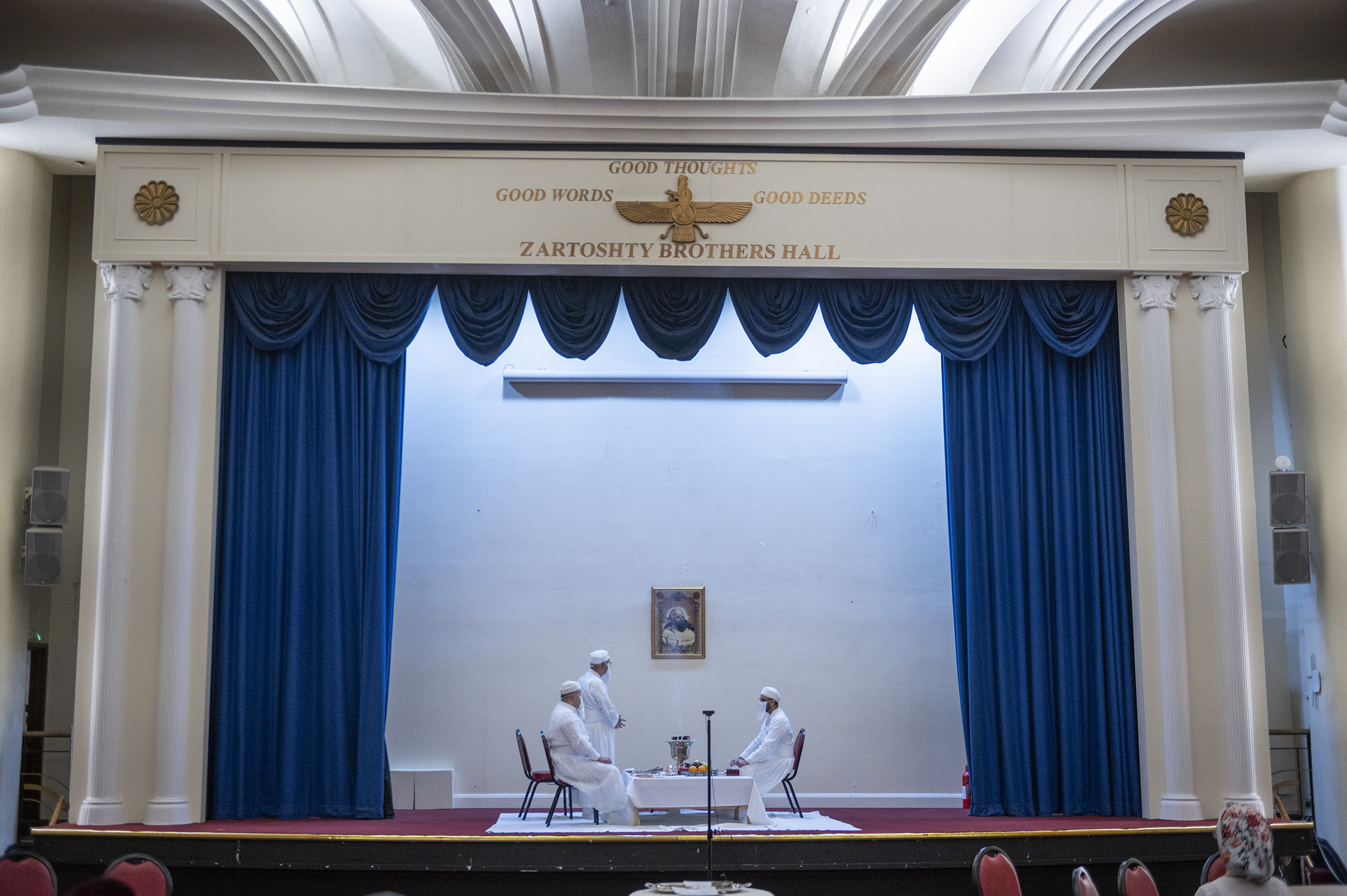


Working in close collaboration with the congregation and resident priest, a well-defined framework for filming the Jashan and Boi ceremonies was established. As a result, a series of filming devices were constructed that captured the religious and social practices from the perspective of the congregation. These films were then projected back into the site, enabling an exact transfer of scale and time as the image mapped the architectural site. Technically, the context of this research lies in the origins of early cinema, with reference to the Lumière Brothers' Cinématographe (a three-in-one device that could record, develop, and project). Through this fieldwork, site-integrity encouraged the generation of grassroots perspectives and insights by actively involving the faith community in the creative process.


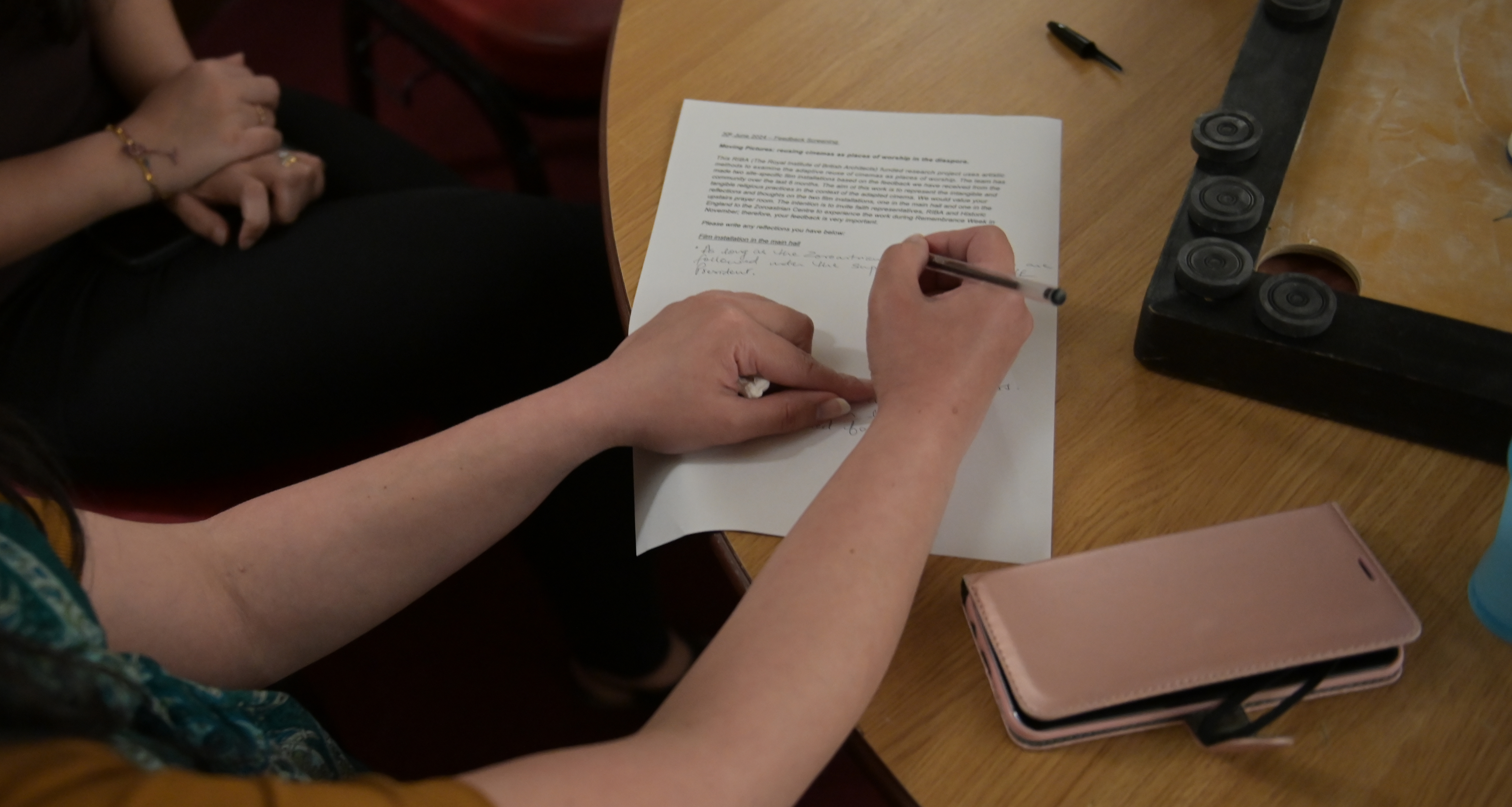

On 26 November 2024, the Zoroastrian Centre hosted the two expanded film installations as part of the London Migration Film Festival. The doors opened at 6pm, and over 50 members of the congregation warmly welcomed members of the public into the centre, offering tea and samosas to the visitors. The deputy mayor of Harrow and local councillors attended, along with Laura Moffat from Arts and Christianity.


Guests were invited to experience the two simultaneous site-specific film installations in the Zartoshty Brothers Hall and in the Prayer Room. Through these installations, Moving Pictures provided a profound commentary on how migration and community shape the transformation of urban spaces into vibrant sites of living heritage.




After the screenings, Malcolm M. Deboo, President of the Zoroastrian Trust Funds of Europe (ZTFE), delivered a welcome address in the main hall. He also emphasised how the films offer a fresh perspective on their traditions, seamlessly connecting the community's present identity with the building's rich cinematic past, resulting in a deeply meaningful and immersive experience.
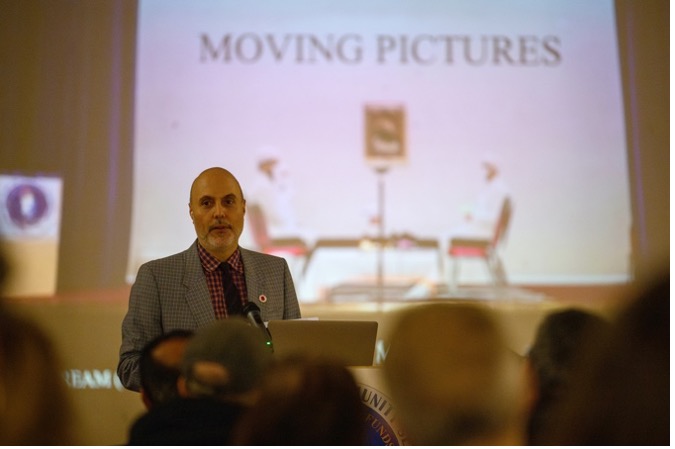

This was followed by an artist talk and two guest speakers, who shared their insights on the project. Professor Cangbai Wang from the University of Westminster highlighted how the film installations create a multi-vocal heritage space, allowing for a fresh perspective on ‘British Heritage' and noted that these initiatives illustrate that heritage is ‘a moment of action, not something frozen in material form’ (Smith, 2006: 83). Artist and curator Dima Karout reflected on the Moving Pictures project a ‘Living Archive’, highlighting the significance of socially engaged art and community collaboration in fostering inclusive cultural heritage.
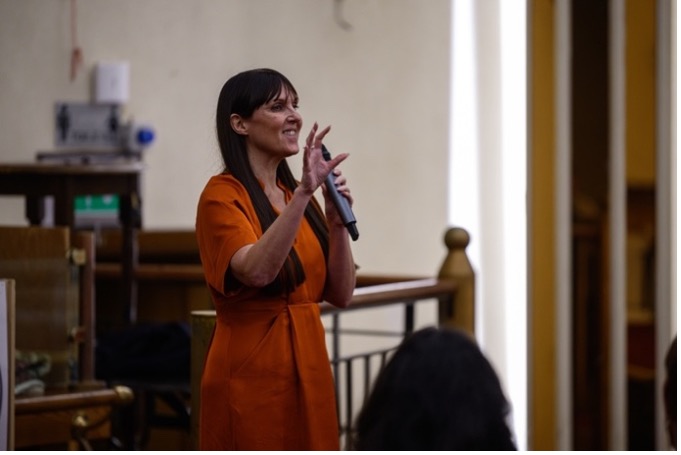
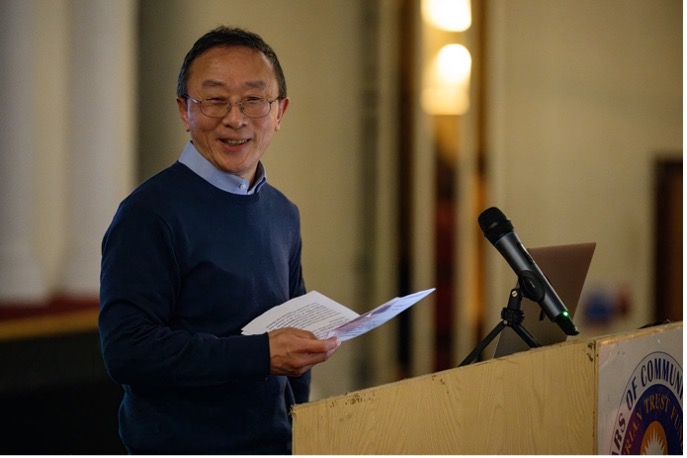

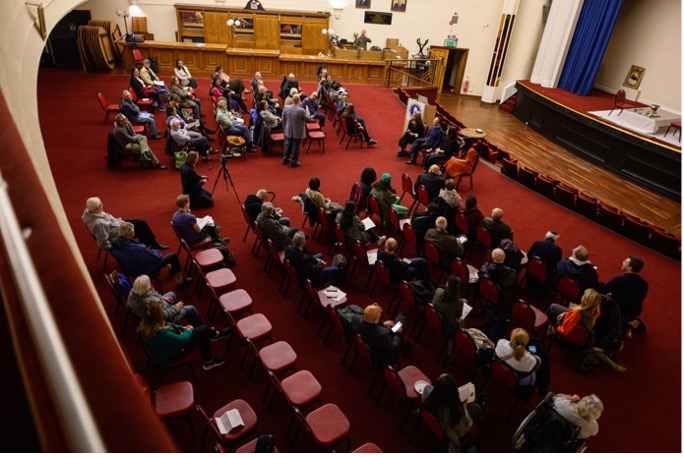
This was followed by a panel discussion on Art, Migration, and Placemaking, chaired by researcher Özlem Köksal, which examined art's role in shaping cultural identity and fostering dialogue within diasporic spaces. The panel was then opened up for additional feedback from congregation members and questions from the floor with provided a lively debate and discussion. Attendees left the event with a deeper appreciation for the complexities of heritage and its role in shaping inclusive, multicultural urban spaces.
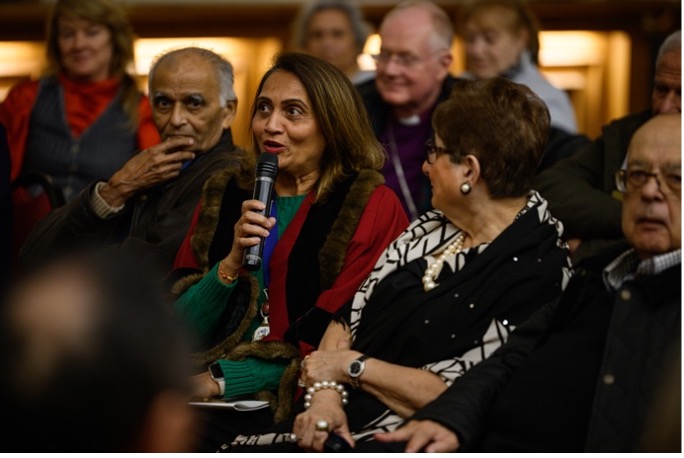
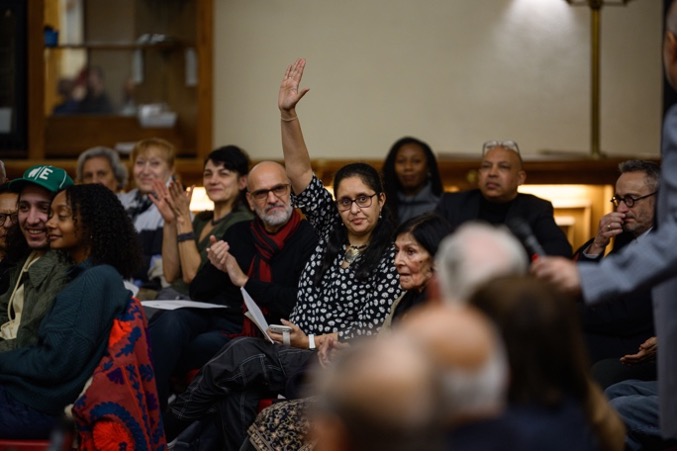
Moving Pictures Film Screening & Workshop
We were honoured to present the Moving Pictures film installations as part of the 24th Varsi Jashan, held in memory of Mobed Faridoon Bahman Zartoshty, a highly respected patron of the Zoroastrian community. His vision and generosity, along with that of his younger brother, the late Mobed Mehraban Zartoshty, made it possible for the Zoroastrian Trust Funds of Europe (ZTFE) to purchase and restore the former Grosvenor Cinema. This building has now become the Zoroastrian Centre for Europe, which is recognised as a Grade II* listed site of architectural and cultural importance. The event, held as part of Inter Faith Week 2024, brought together a remarkable group of faith leaders, heritage professionals, and community members to reflect on the evolving spiritual and civic role of such buildings.
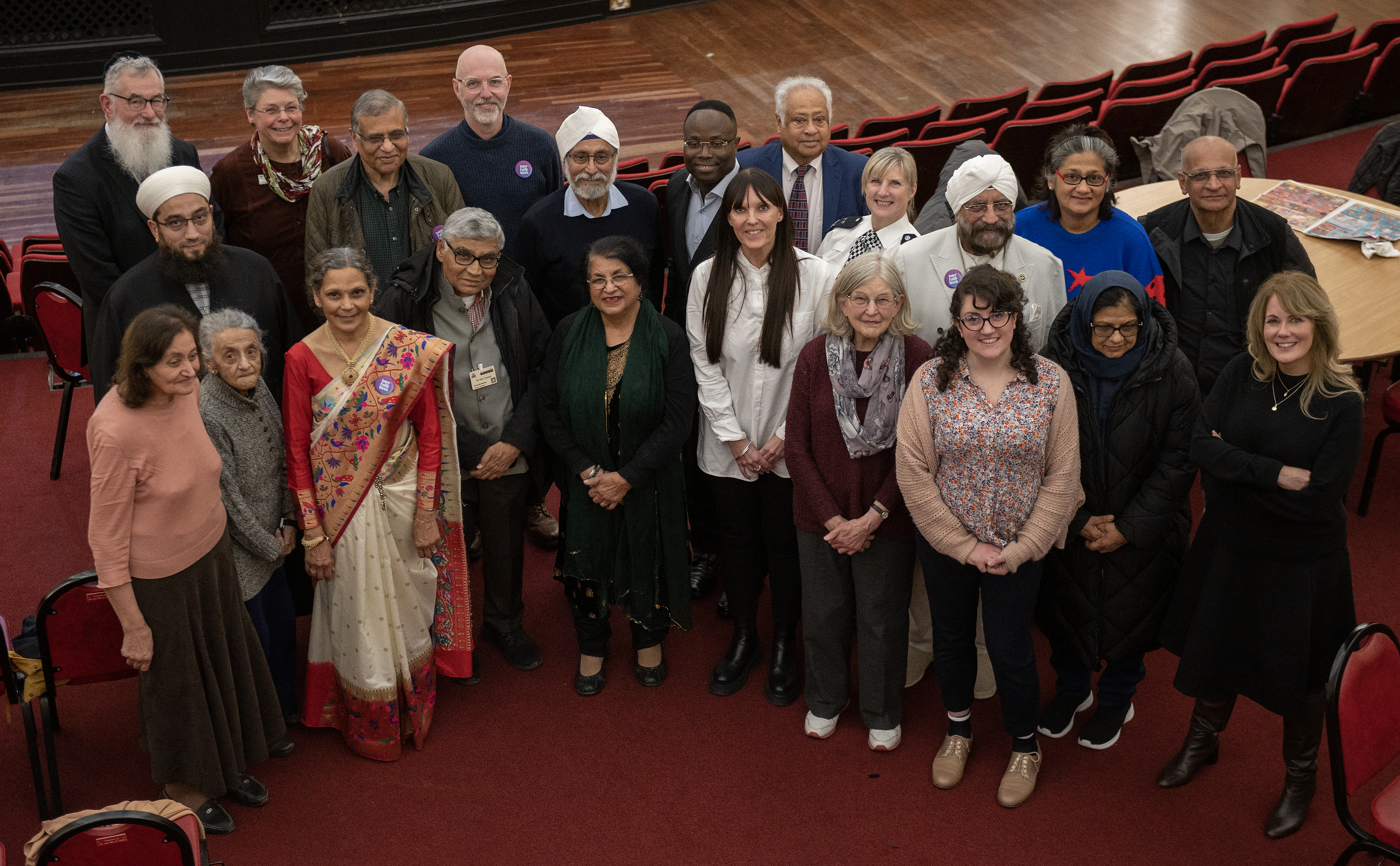
Following a community lunch, an afternoon workshop featured valuable contributions from key representatives of Historic England: Diana Evans (Head of Places of Worship), Caroline Kendall (Senior Listings Policy Advisor), and Dr. David Hampshire (Senior Policy Adviser – Places of Worship). Their insights into national heritage policy and the lived realities of listed faith buildings helped ground the discussion in current practice and future potential. The workshop explored a range of vital themes, including the challenges and opportunities involved in adapting listed buildings for worship, the complexities of navigating planning and heritage legislation and the value of increasing public access to repurposed religious buildings, and the role of storytelling and documentation in preserving intangible cultural heritage.


Fun Club – Presentation of Moving Pictures Film Installations
We had the pleasure of presenting our Moving Pictures film installations to the children and families of the Zoroastrian community as part of their monthly Fun Club session. This event formed part of our wider collaboration with ZTFE through the London Migration Film Festival, and it offered a valuable opportunity to share and reflect on the community’s heritage with its younger members, who had never experienced religious ceremonies first-hand.


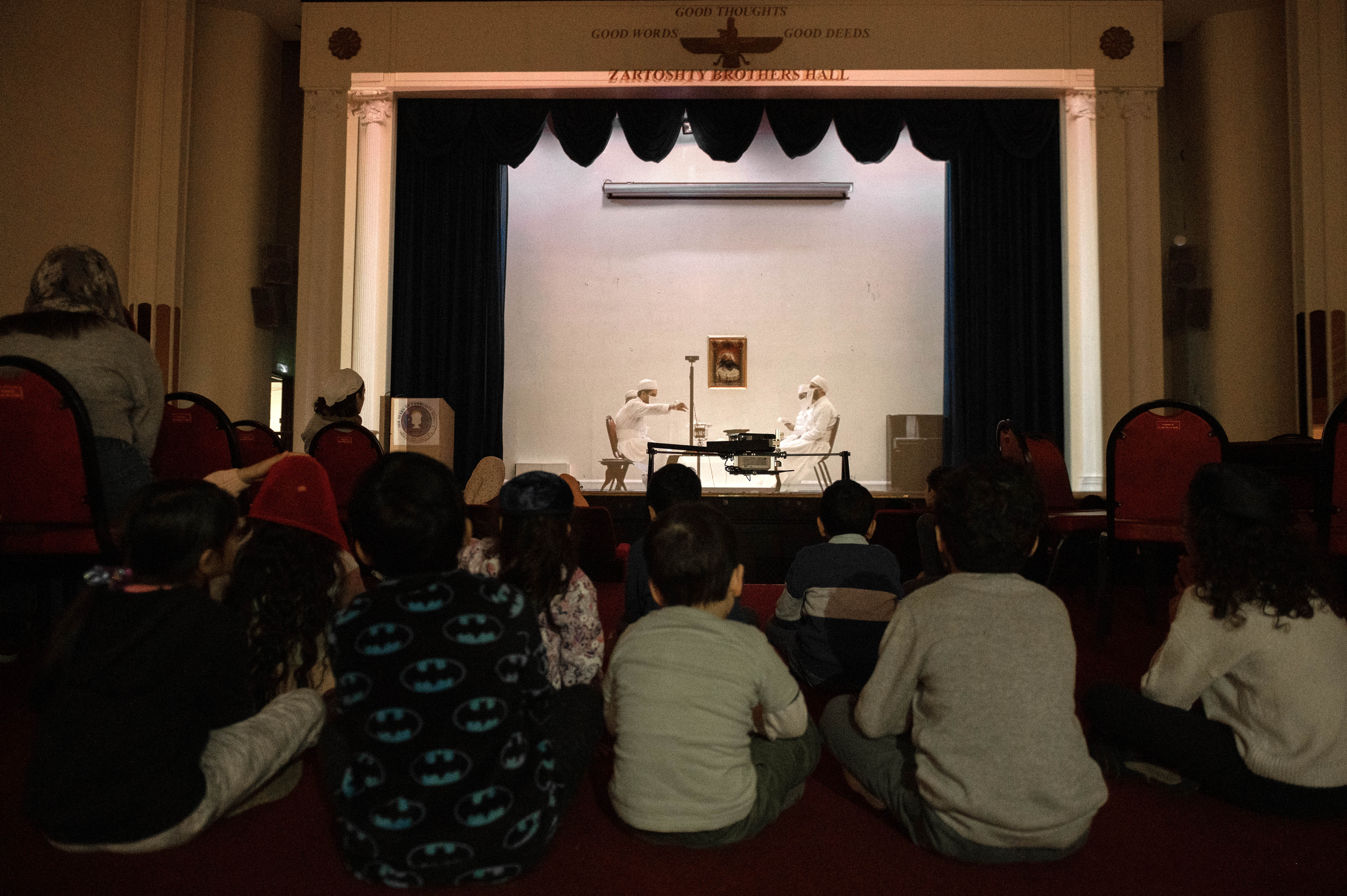
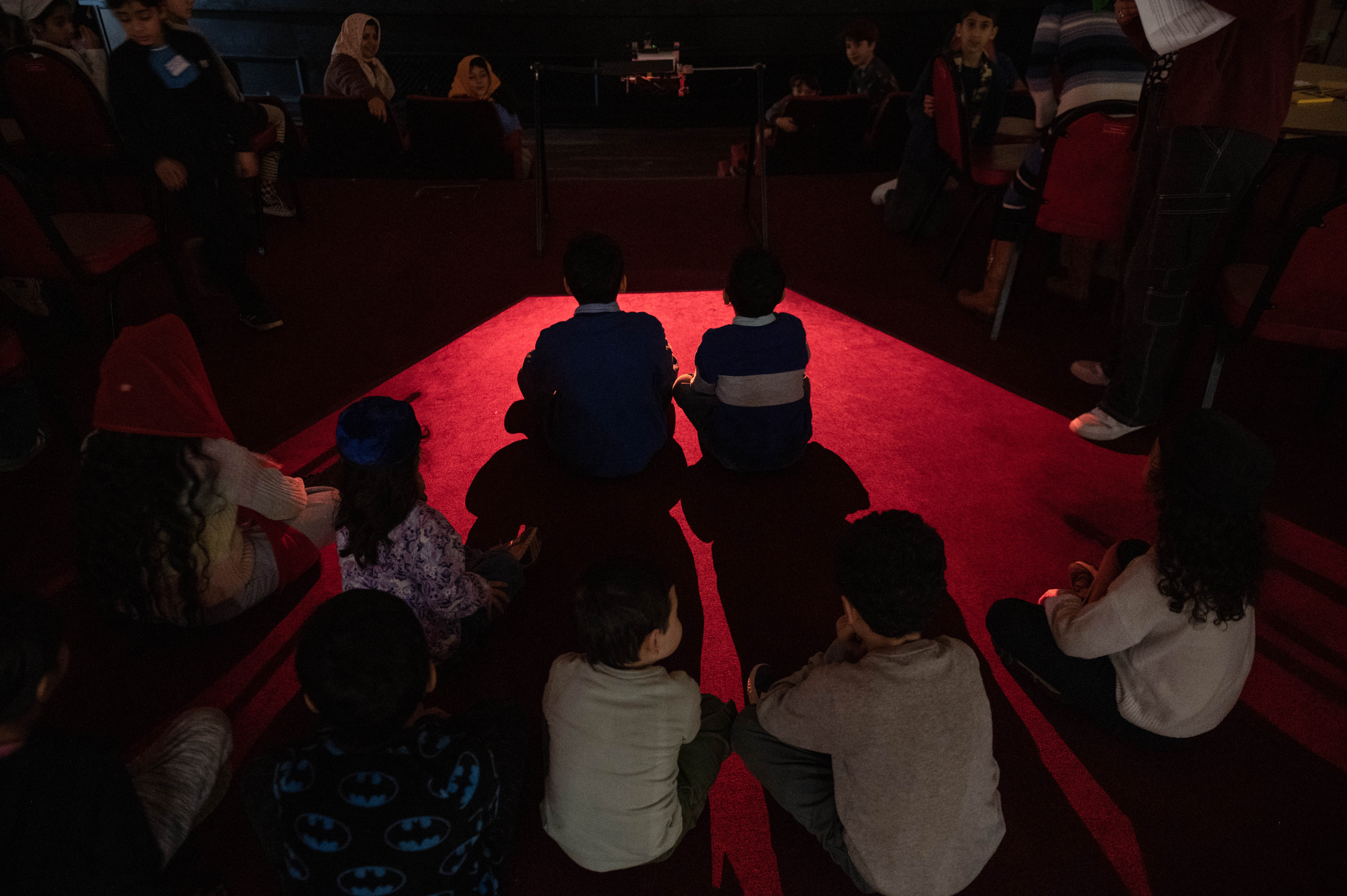
The day began with a discussion about the history of the Zoroastrian Centre itself. With the children and youth, we explored how the building—originally the Grosvenor Cinema—was designed in 1936 and later transformed into a vibrant community and religious space. We engaged the group with questions about the building’s past use, architecture (including its well-known “elephant trunk” façade), and the evolution of the prayer room from a cinema projection booth into a sacred space. These conversations helped connect the children’s understanding of place, memory, and transformation. Then in the Zoroastrian Centre’s prayer room, where we screened the first installation in the fire temple. This film installation recreated the atmosphere of the sacred Boi ceremony. We invited the children to observe closely and reflect on what they could see, hear, and smell—encouraging a sensory and emotional response. Together, we explored the symbolism of fire in Zoroastrianism, its representation of energy and divine presence, and the ritual actions of the priest during the ceremony. The second installation—a film of the Jashan ceremony—was performed in the main hall. Children and parents entered quietly and respectfully with their heads covered and were able to witness this important Zoroastrian ritual, many for the first time. The film provided a visual introduction to the ceremony’s structure and spiritual purpose, reinforcing previous Fun Club sessions where the Jashan had been introduced through role play and storytelling.


After the screenings, participants were divided into age-appropriate groups for follow-up discussions and activities. The youngest children took part in an arts activity based on themes from the films, while the older children and teens reflected through poetry and discussion. These sessions were designed to encourage personal expression, critical thinking, and deeper engagement with the content presented. Parents were invited to complete feedback forms, and the children responded to questions about the films and ceremonies and were asked to respond through drawings. The children responded with enthusiasm and it was a privilege to contribute to their journey of understanding and celebrating their Zoroastrian heritage.
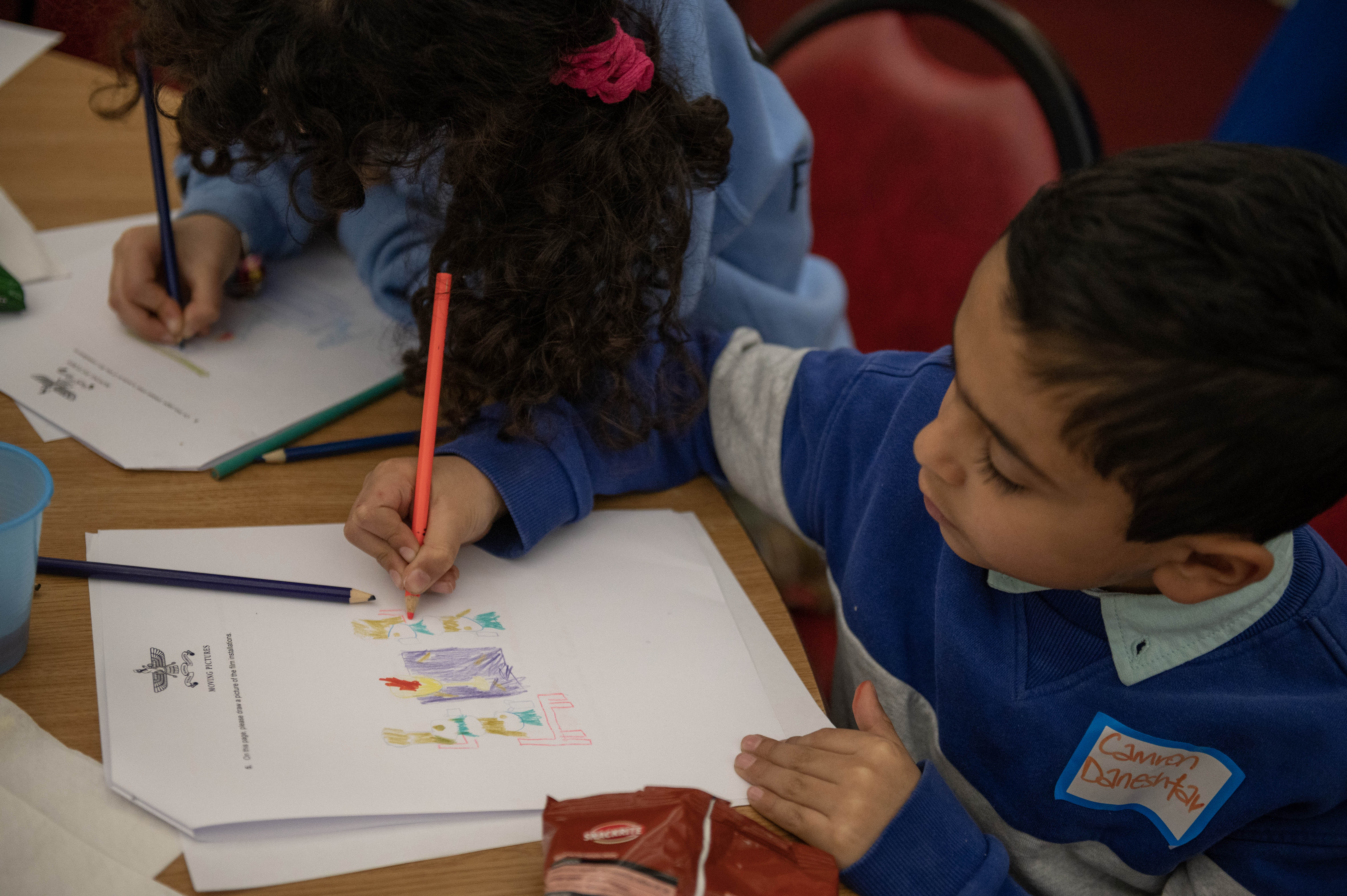
Visit of the Minister of Faith, Lord Wajid Khan of Burnley, to the Zoroastrian Centre
The Zoroastrian Trust Funds of Europe (ZTFE) warmly welcomed the Parliamentary Under-Secretary of State for Faith, Communities and Resettlement, Lord Wajid Khan of Burnley. Lord Khan, a former Mayor of Burnley and former MEP for North West England in the European Parliament has an extensive academic and political background, with faith and community engagement as a consistent theme.


A short film produced by the University of Westminster showcased the transformation of the Grade II* Zoroastrian Centre. Once the Grosvenor cinema, it has been meticulously restored by the community, as documented through the photographic archive of local resident Robert Douglas-Law. Julie Marsh elaborated on how this project fed into the broader RIBA-funded ‘Moving Pictures’ research project, which examines the adaptive reuse of former cinemas as places of worship. The unique heritage value of these adapted sites lies in the creative agency of the communities in reconfiguring them into places of worship. She introduced the inclusive, co-creative approach ‘site-integrity’ to record and safeguard not just the architectural adaptations, but the living practices which layer forms of intangible cultural heritage over the existing historic fabric of these historic buildings.

